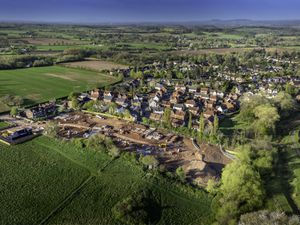West Midlands unemployment falls amid surge in new jobs
The number of people out of work in the West Midlands fell again in the three months to March as job creation continued to surge in the region.

The unemployment figure for the region was down 14,000 on the previous quarter at 139,000 with the fall over the course of a year 21,000. Employment was up 57,000 to 2.74 million.
Nationally the number of people in work reached a new record. It was up by 197,000 in the quarter to 32.3 million, the highest figure since records began in 1971, giving a record employment rate of 75.6 per cent.
Unemployment fell by 46,000 to 1.42 million, giving a jobless rate of 4.2 per cent, the lowest since 1975, according to the Office for National Statistics.
However the numbers claiming Jobseeker's Allowance and other unemployment benefits rose again last month in the West Midlands and nationally.
The claimant count, which includes people on Jobseeker's Allowance and the unemployment element of Universal Credit, increased by 31,200 last month to 897,000, the highest for more than three years.
The region's claimants total was up 4,180 to 99,795 – 2.8 per cent of the working population.
Wolverhampton saw the biggest increase in the Black Country of 515 to 7,700 (4.8 per cent) with Dudley seeing a rise of 440 to 7,445 (3.9 per cent) and Sandwell up 130 to 7,600 (3.8 per cent).
Only Walsall saw a fall of five to 5,150 (three per cent).
Across Staffordshire there was a rise of 120 to 7,115 (1.3 per cent) with Lichfield's figure up 85 at 755 (1.2 per cent), South Staffordshire rising by 70 to 950 (1.4 per cent) and Stafford having 50 more claimants at 850. Cannock Chase had an increase of 15 to 930(1.5 per cent).
The Wyre Forest district, including Kidderminster, rose by 40 to 985 (1.7 per cent).
Average earnings increased by 2.6 per cent in the year to March, down by 0.2 per cent on the previous month, but 0.2 per cent up on a year ago. The latest CPI inflation figure is 2.5 per cent.
Senior ONS statistician Matt Hughes said: "With employment up again in the three months to March, the rate has hit a new record, with unemployment remaining at its lowest rate since 1975.
"The growth in employment is still being driven by UK nationals, with a slight drop over the past year in the number of foreign workers. It's important to remember, though, that this isn't a measure of migration.
"Growth in total pay remains in line with inflation, meaning real earnings are flat on the year."
Work and Pensions Secretary Esther McVey said: "Since 2010 we have seen 3.2 million more people move into work right across the UK. Youth unemployment has fallen by over 40 per cent and the unemployment rate at its joint lowest since 1975.
"Today's figures once again cement that turnaround, with an employment rate of 75.6 per cent, and on average over 1,000 people each and every day, since 2010, getting a job.
"With wages growing faster than inflation and increases in the personal tax allowance, not only are more people bringing home a pay packet but they are keeping more of their hard-earned money for themselves and their families."
Matthew Percival, Confederation of British Industry head of employment, said: “It’s good to see rising wages alongside strong jobs growth. The challenge now is to embed wage increases through sustained productivity growth, helping to improve living standards right across the UK.
“Working in partnership to deliver the industrial strategy, businesses and government can improve productivity by improving routes to new skills and jobs. And reforming delivery of the apprenticeship levy and increasing the adoption of proven technologies will be critical to sustained success."





